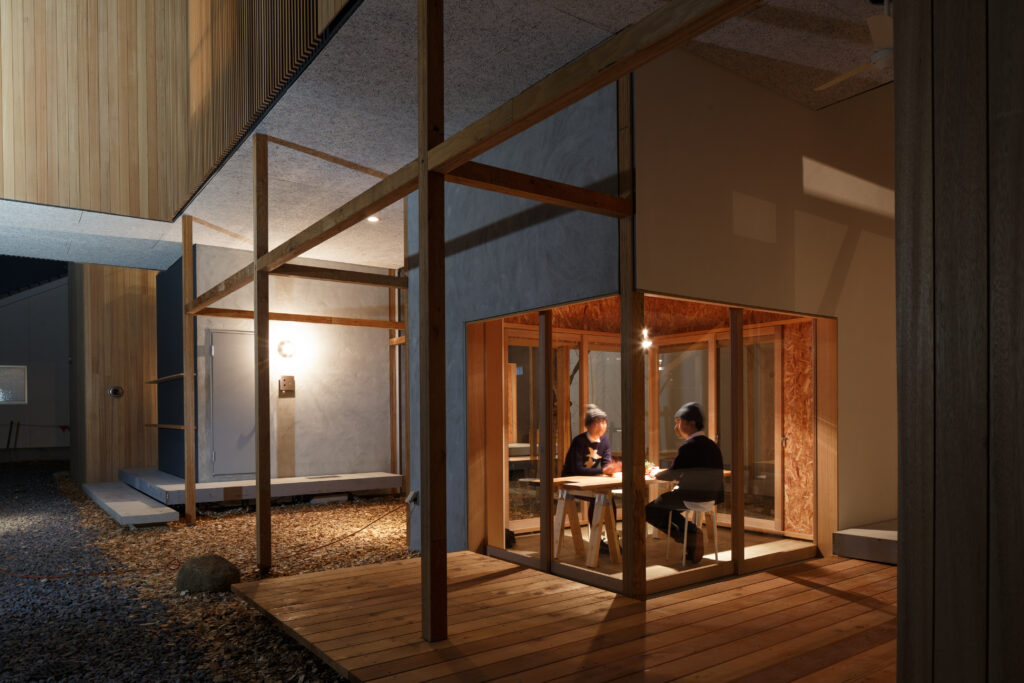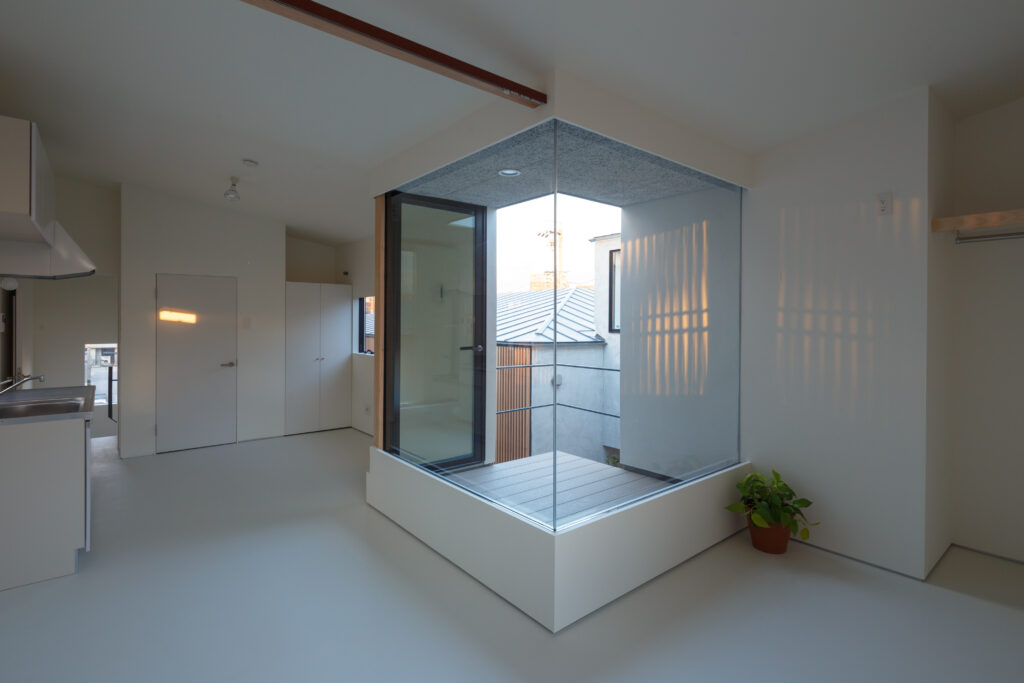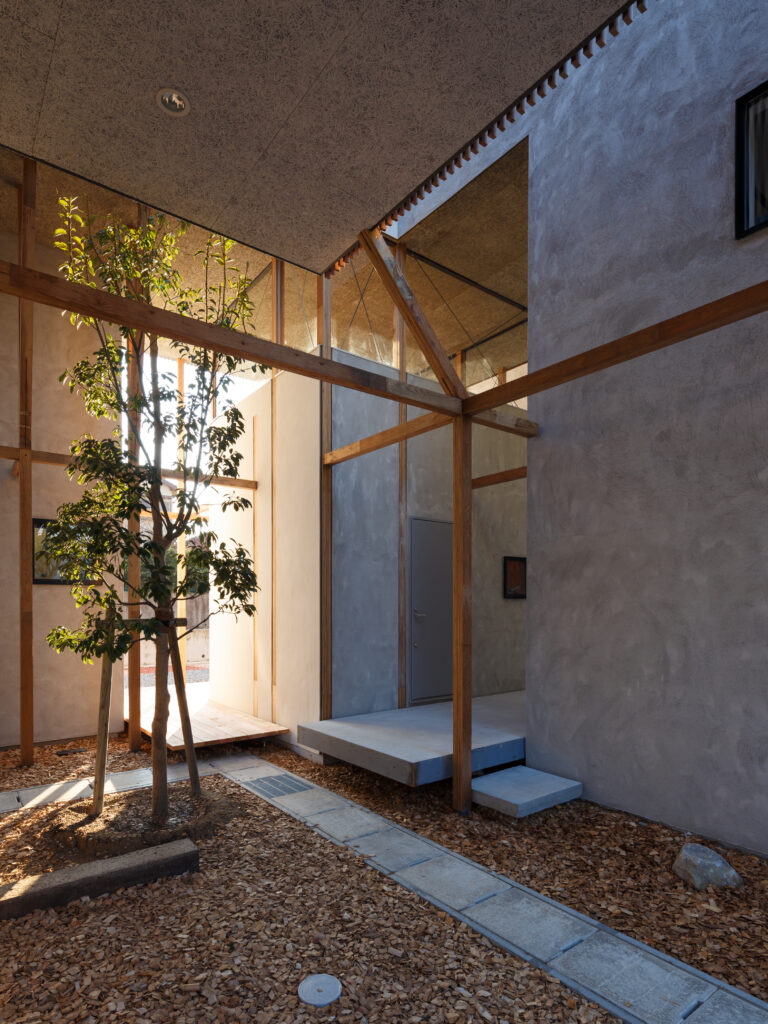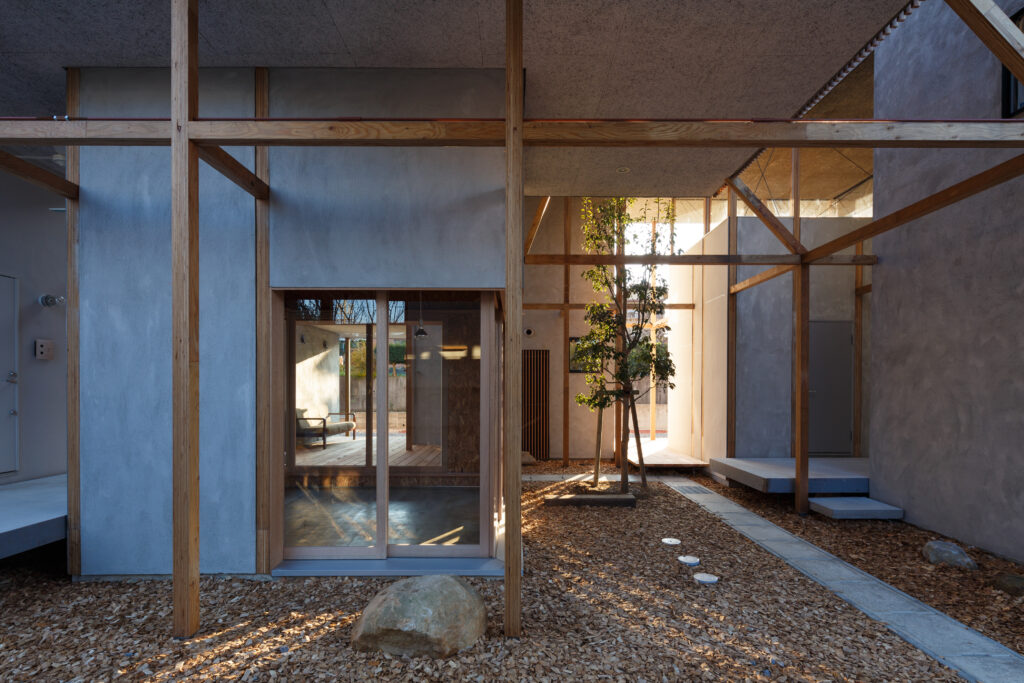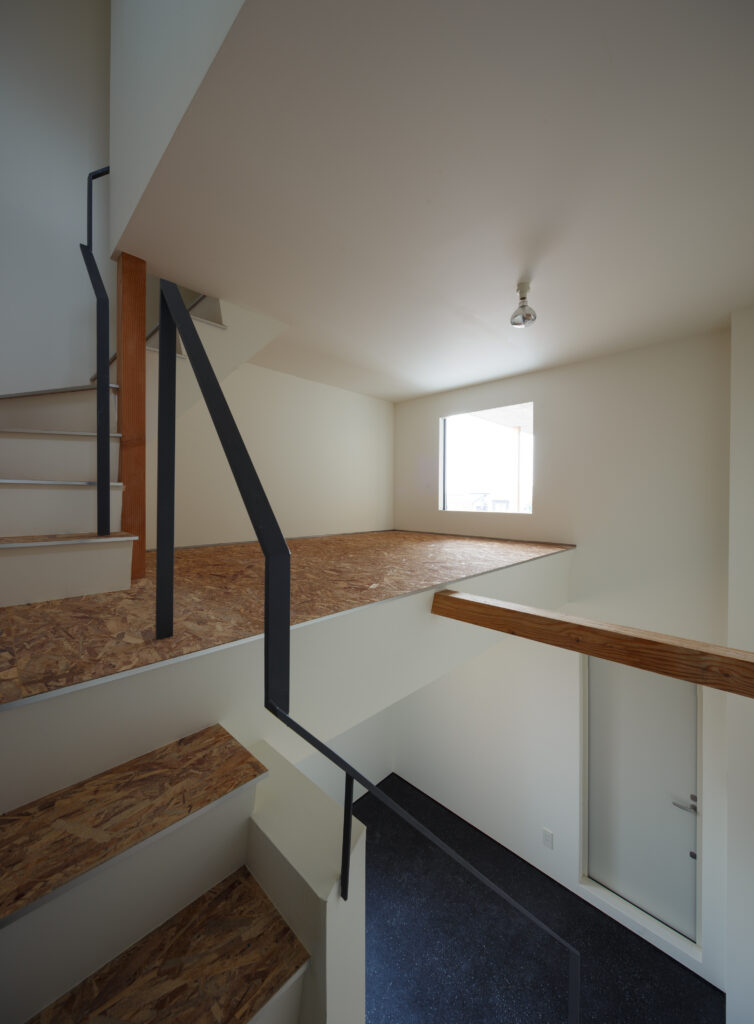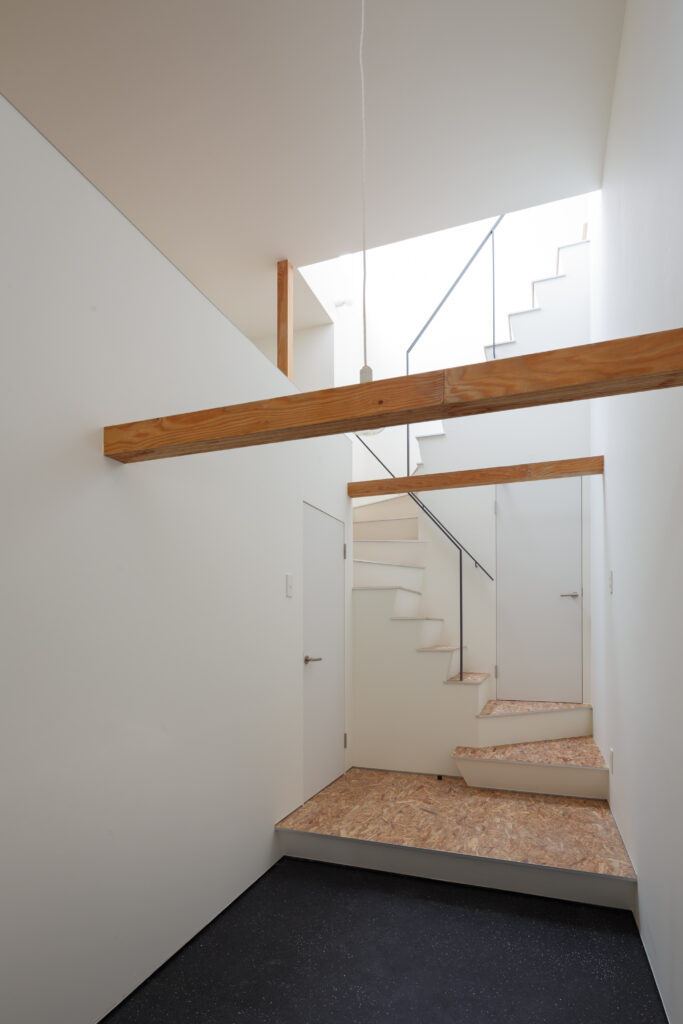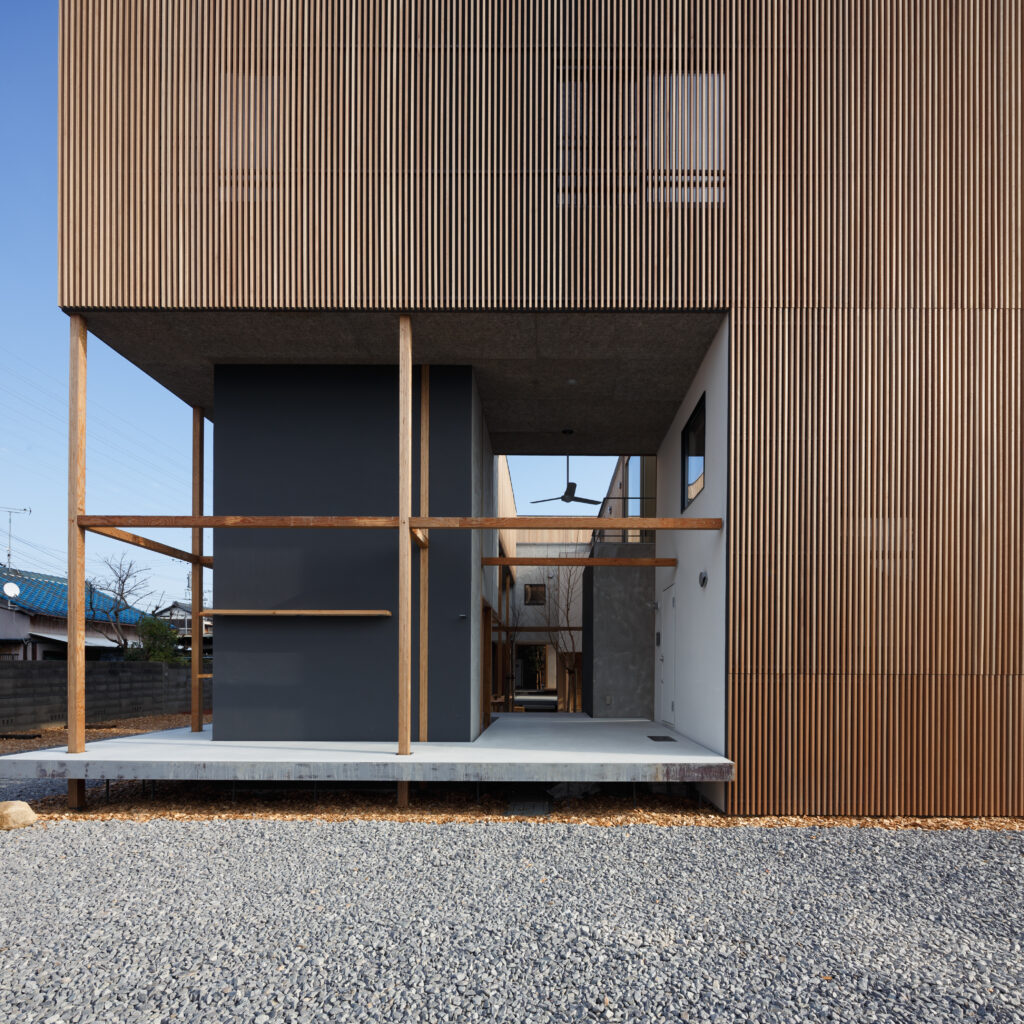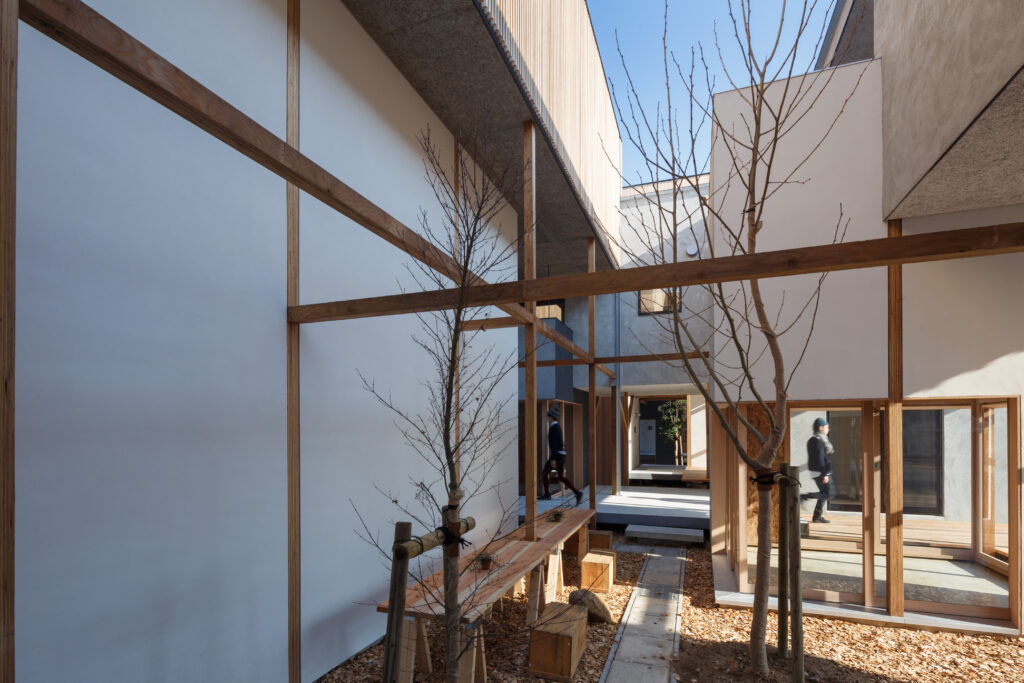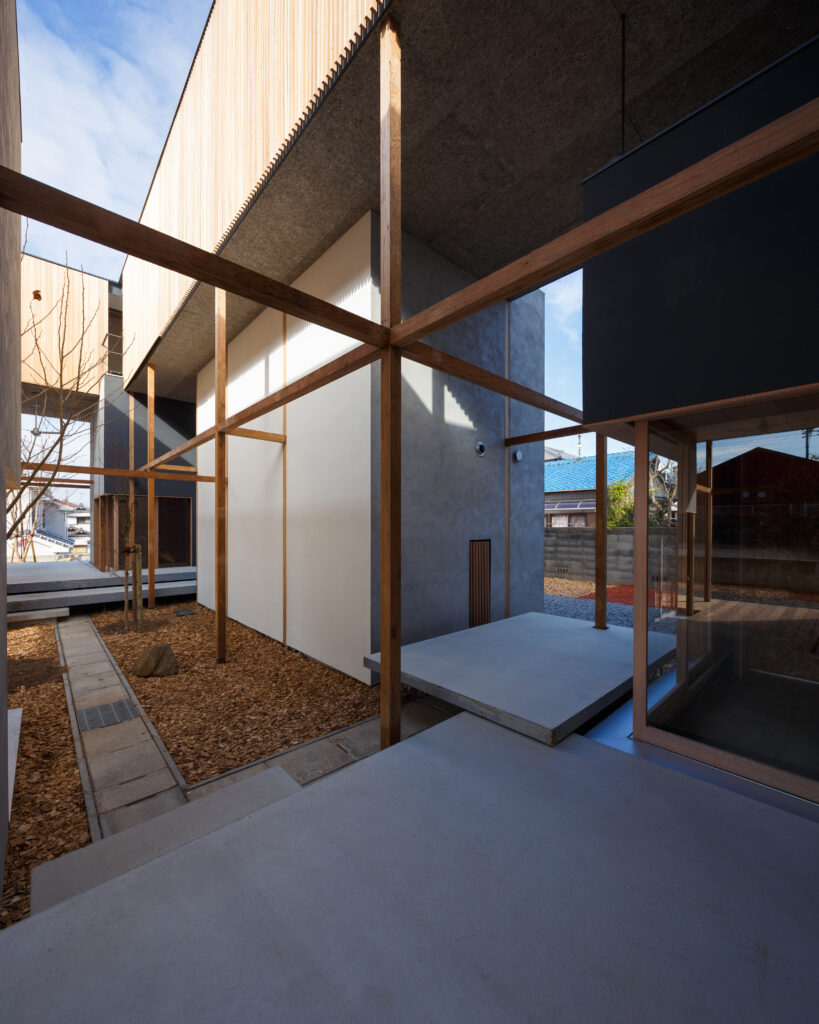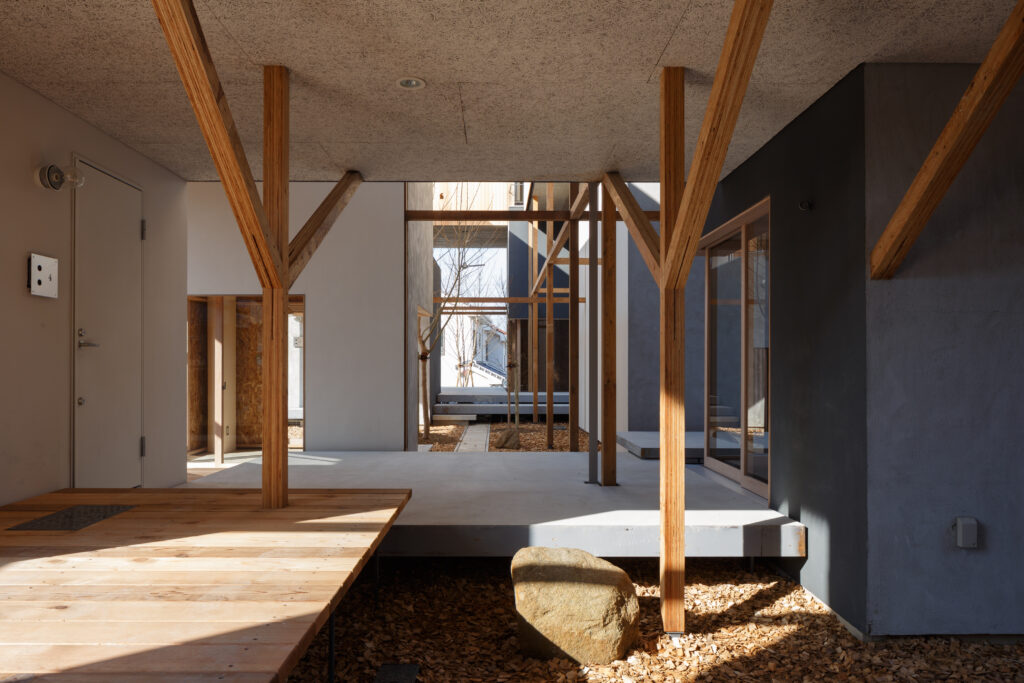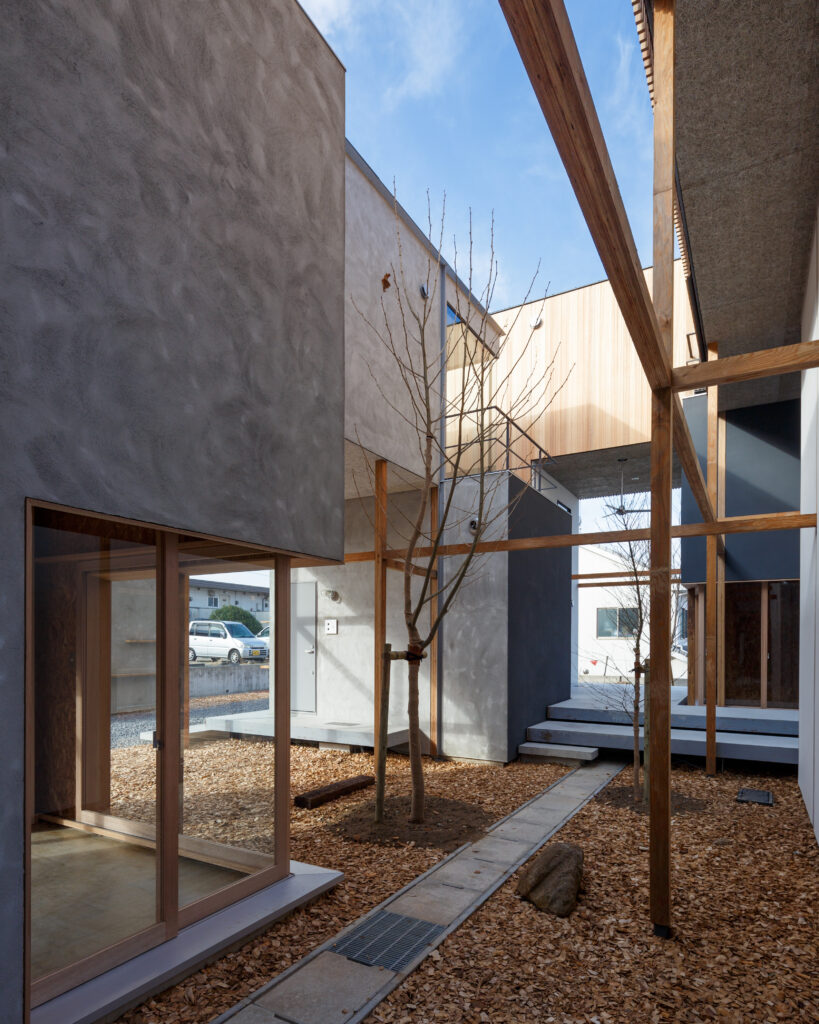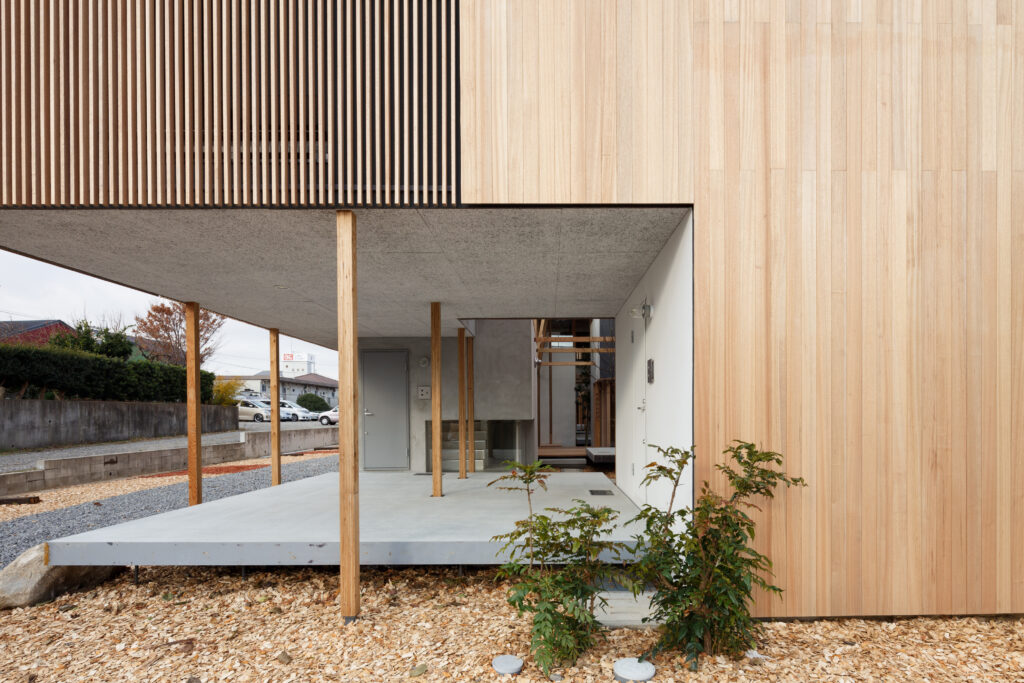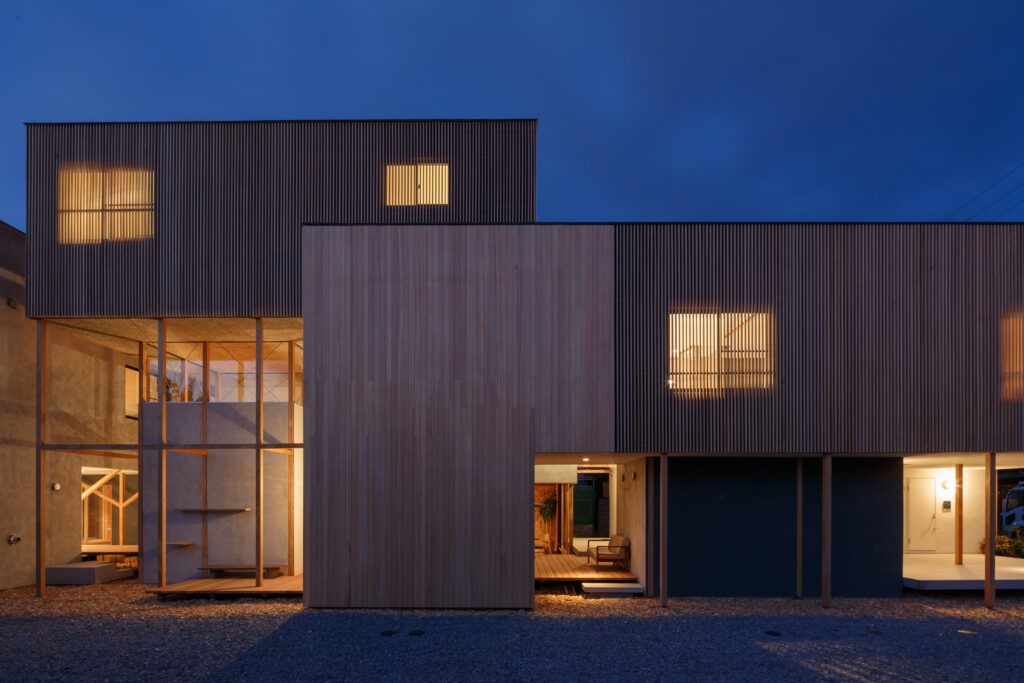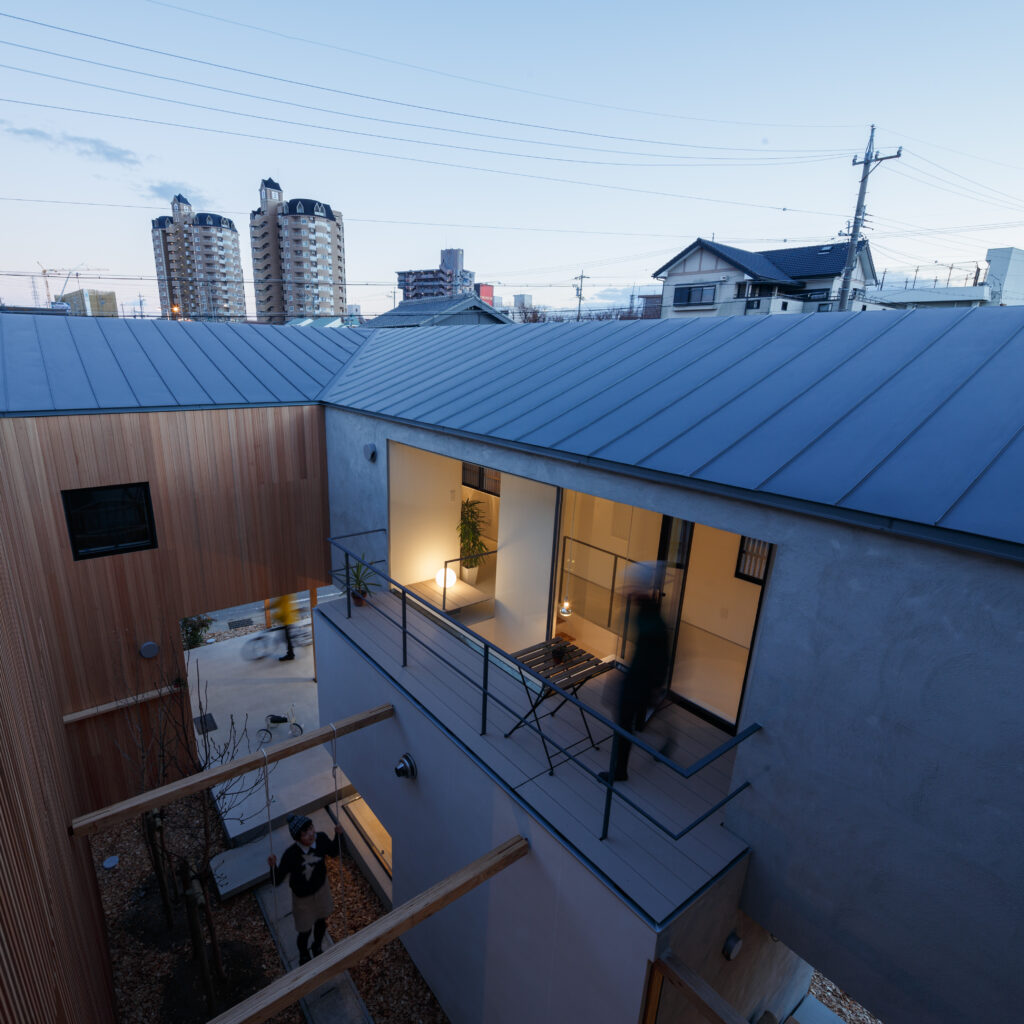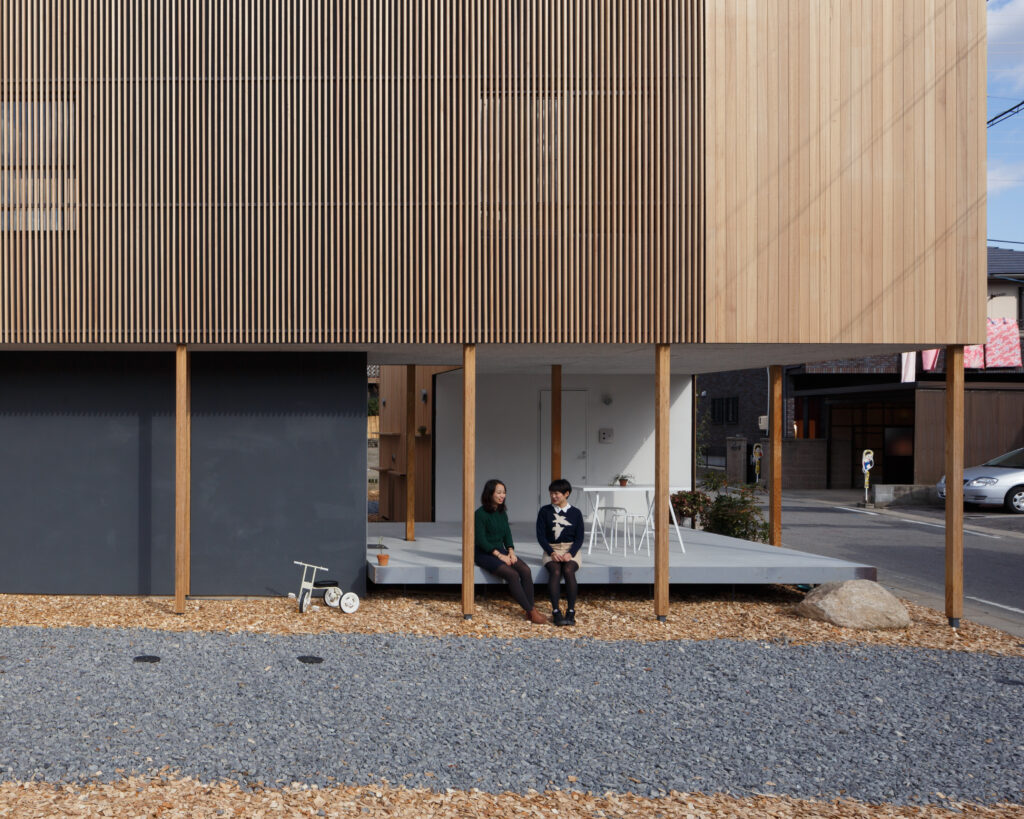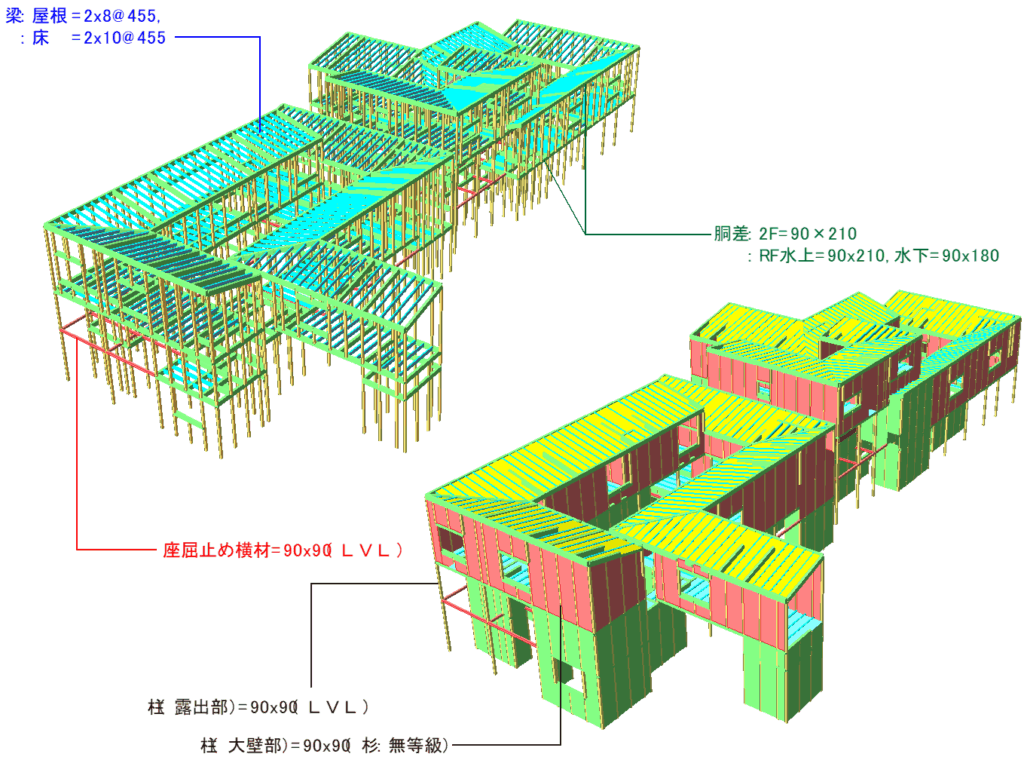滋賀県立大学 永井拓生+サステナブル構造デザイン研究室
THE UNIVERSITY OF SHIGA PREFECTURE
滋賀県立大学 永井拓生+サステナブル構造デザイン研究室
THE UNIVERSITY OF SHIGA PREFECTURE
滋賀県立大学 永井拓生+サステナブル構造デザイン研究室
THE UNIVERSITY OF SHIGA PREFECTURE
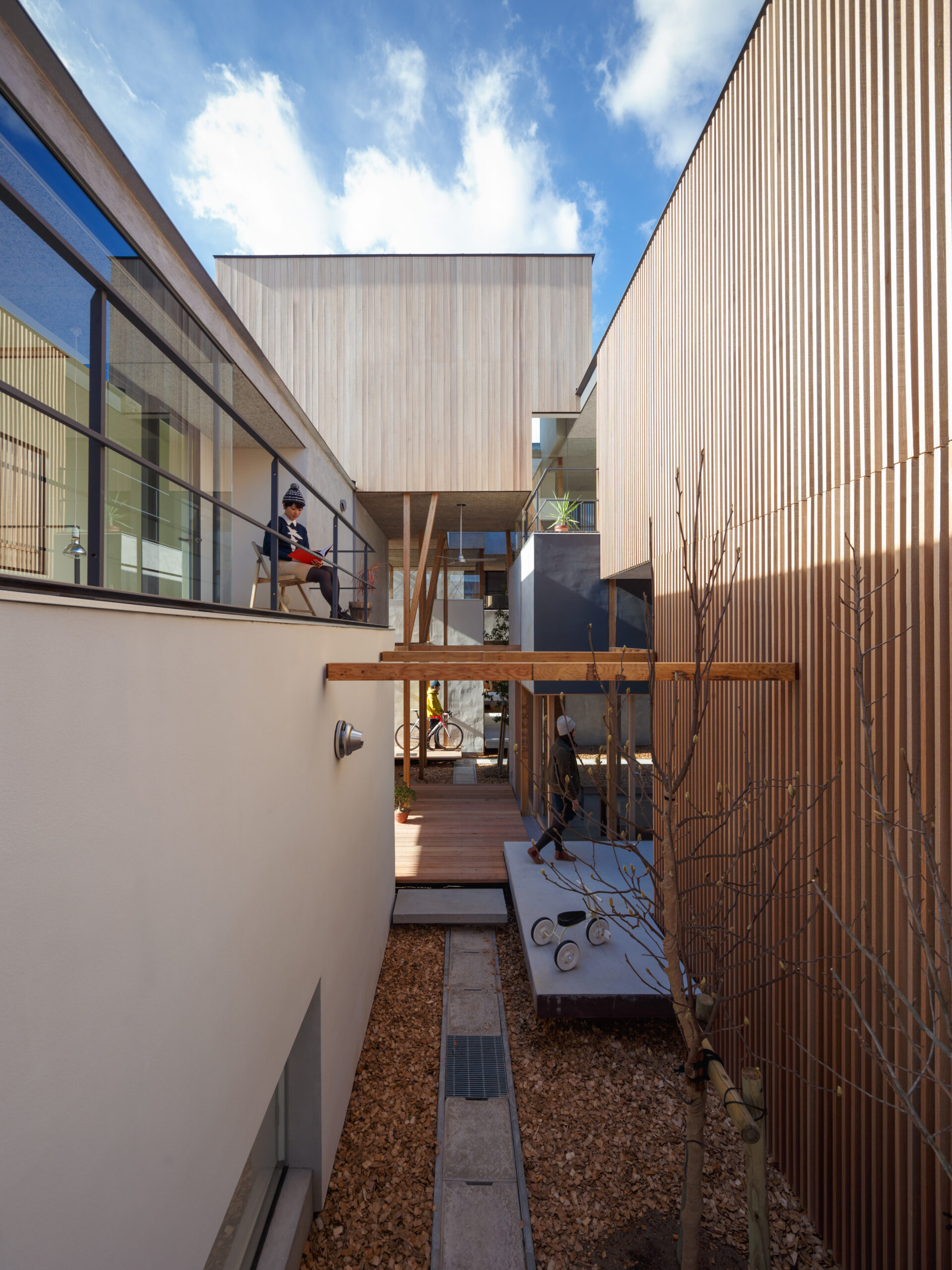
Overall Structural System
The basic configuration of this building consists of a series of interconnected “tube”-like volumes: box-shaped elements with footprints approximately 2.73 to 3.64 m square rise vertically from the first floor and extend horizontally in the X and Y directions at the second-floor level. While the form appears complex, the structural system is an adaptation of conventional Japanese timber construction, organized around the following three primary elements:
(1) Floors: Both floor and roof structures are composed of uniformly sized 2x lumber beams arranged at regular intervals, with structural plywood sheathing installed to create a rigid horizontal diaphragm. These beams are designed to support only the weight of the floors.
(2) Walls: The walls consist of 90 mm square posts with structural plywood sheathing applied on both sides, serving both as seismic shear walls and as wall-beams that form the monocoque structure of the tube-shaped volumes spanning in mid-air.
(3) Independent Columns: To uniformly distribute stress along the wall-beams, independent columns are placed at key points to support the monocoque tubes, bearing only axial loads.
The first two elements together form a strong monocoque structure capable of transmitting all seismic forces directly to the ground. The independent columns contribute by carrying axial loads without affecting lateral stiffness. Precisely because of the building’s complex geometry, the load path was deliberately simplified, ensuring that the structural roles of each element are clearly defined.
Structural Analysis
Due to the building’s complex form both in plan and elevation, estimating seismic behaviors based solely on the seismic forces defined in the Building Standard Law of Japan would be insufficient. Therefore, in addition to the standard code-defined seismic forces, the structural behavior was also evaluated under seismic forces proportional to its natural vibration modes. The analysis revealed that each tube-shaped volume exhibited distinct vibration characteristics, swaying independently. Accordingly, the structure was divided into areas corresponding to these predominant vibration modes. For each area, shear walls were designed to resist shear forces equivalent to approximately 0.3G, ensuring an adequate safety margin.
Architectural Design: Eureka
Structural Design: Eureka
Program: Apartment
Year of completion: 2013
Photo courtesy of Kurome Photo Studio
全体架構
この建物の基本的な構成は,1階において1.5~2間角程度のボックスが上に伸び,2階レベルでX・Yの水平方向に伸びていくような「チューブ」状のボリュームがいくつか組み合わされた形である。複雑な形状だが,構造は一般的な在来軸組工法の応用であり,基本的な要素は以下の3つである。
(1)床:床と屋根は梁せい一定のツーバイ材を一定間隔に並べ,構造用合板を張って強固な水平構面を構成する。ツーバイ材の梁は床の重量のみを支持する。
(2)壁:壁は90角の柱と構造用合板両面張からなり,耐震壁であると同時に,空中を亘るチューブ状のモノコック構造を構成する壁梁でもある。
(3)独立柱:モノコック構造としたチューブを,ところどころ,壁梁の負担応力が一定となるように独立柱を配置して支える。
はじめの2つが空中を亘る強固なモノコック構造を構成し,地震力は全てモノコック構造が地面まで伝達する。3つめの独立柱は軸力のみを負担する。複雑な形状だからこそ,力を伝達する仕組みは極力シンプルな方式とし,構造の各要素の役割が明確となるよう計画した。
構造解析
平面・高さ方向ともに形状が複雑なため,地震時に生じる応力は,建築基準法に示される地震力のみから推定するのは困難である。そこで,建築基準法に定義された地震力に加え,固有振動モードに比例した地震力に対しても,併せて検討行った。振動モードはそれぞれの「チューブ」が別々に揺れる性状を示しており,振動モードで卓越的な揺れを示すエリアに分割し,それぞれのエリアで0.3 G相当のせん断力に抵抗できるよう耐力壁を設計し,十分な余裕率を確保した。
意匠設計:Eureka
構造設計:Eureka
用途:共同住宅
竣工年:2013年
写真:黒目写真館
